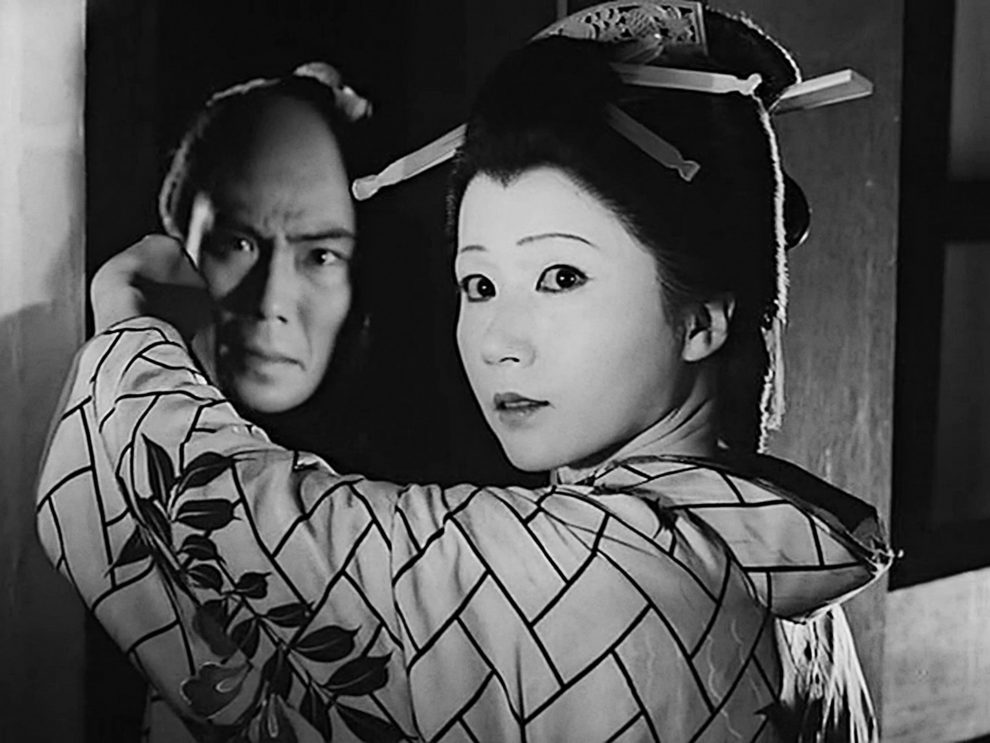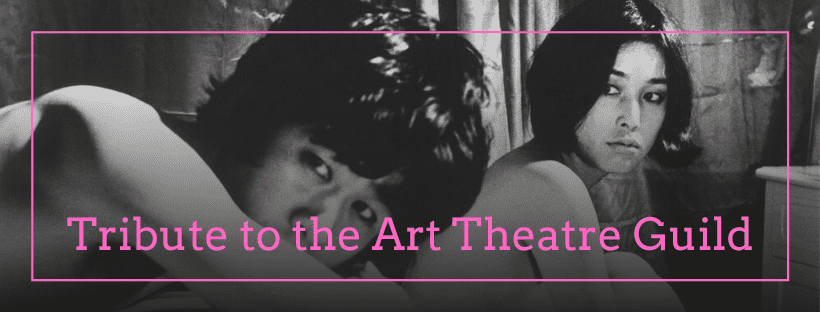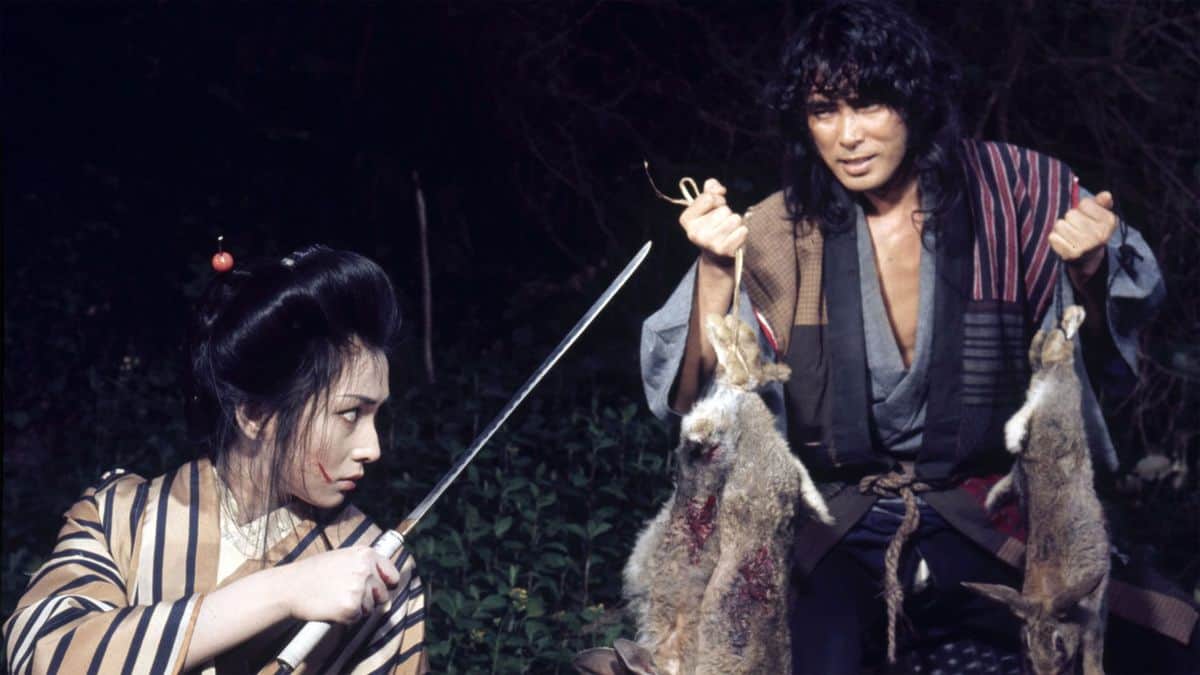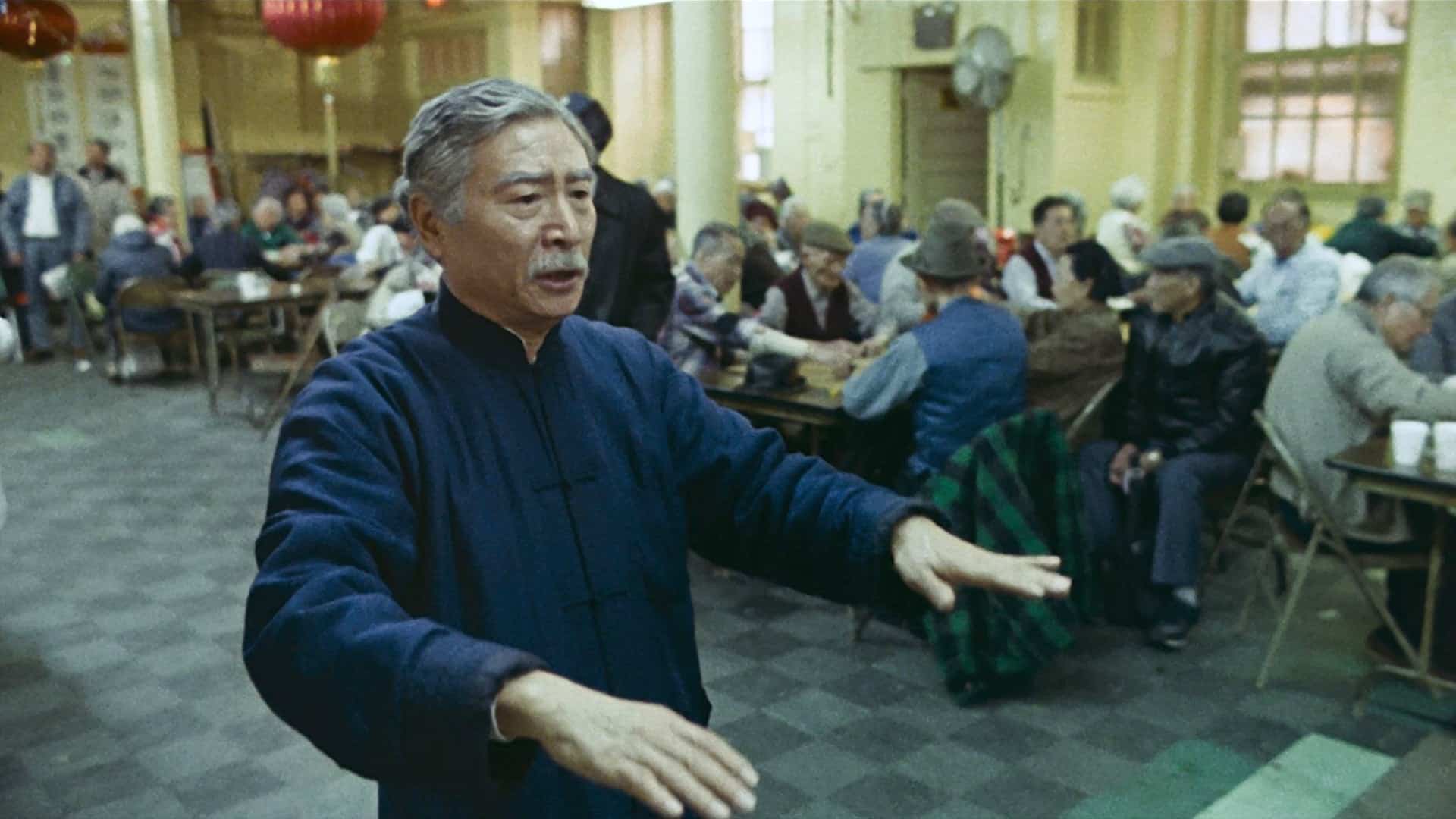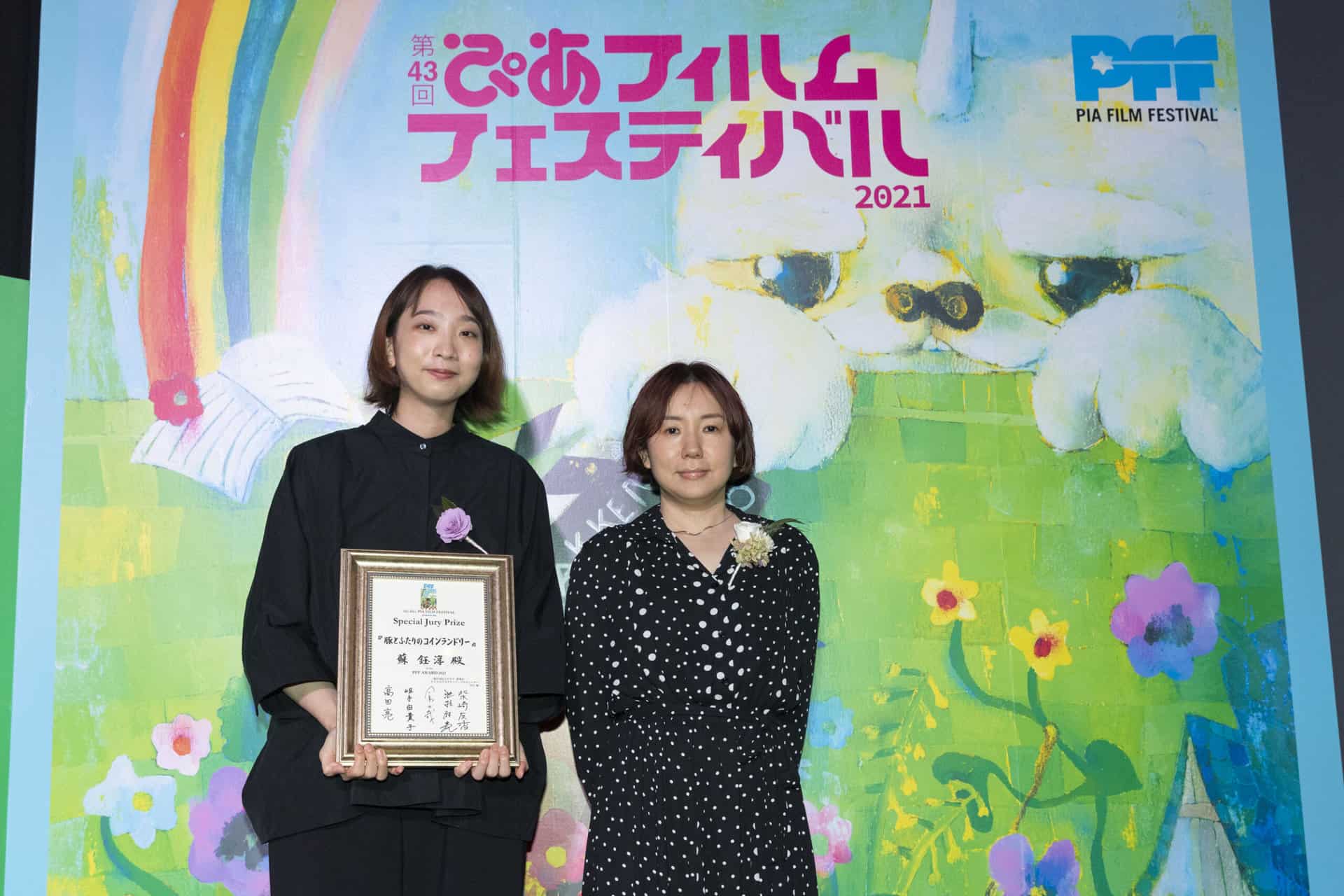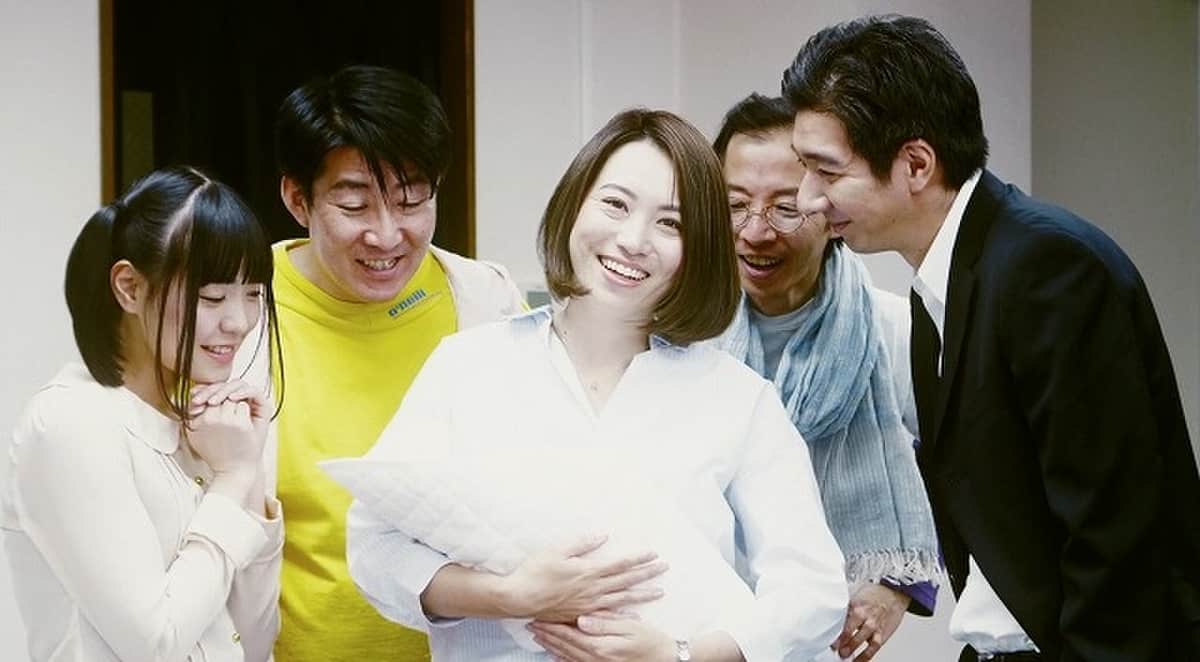Masahiro Shinoda's 1969 screen adaptation of Chikamatsu Monzaemon's 1721 puppet play “The Love Suicides at Amijima” is a heavily stylized melodrama set in 18th-century Japan. As a director associated with the Japanese New Wave, Shinoda introduces some experimental touches to the film but for the most part “Double Suicide” is a relatively faithful adaptation of the classic source material.
Buy This Title
on Amazon by clicking on the image below
Married paper mill owner Jihei (Kichiemon Nakamura) is madly in love with the beautiful courtesan Koharu (Shima Iwashita) and has promised to free her from her contract with the brothel she is forced to work at. However, he lacks the financial means to do so and in their desperation, the two decide to commit suicide together. Their lives are further complicated when Jihei's brother, Magoemon (Yusuke Takita), shows up at Koharu's brothel disguised as a samurai and learns of her and Jihei's plans. At first, Koharu refuses to even make eye contact with the supposed samurai, explaining her situation and love for Jihei to him. After listening intently, he offers to pay the money she needs to be released from the contract and discourages her from committing suicide. Grateful and overjoyed, Koharu decides to sleep with him.
Meanwhile, Jihei overhears loud chatter of Koharu's samurai client and, in a rage, goes to the brothel to confront his mistress about her infidelity. Magoemon reveals himself to his brother and scolds him for the affair and tells him that Osan (also Shima Iwashita), Jihei's wife and cousin, is about to be taken back home by her father Gosaemon (Yoshi Kato), who is furious about his adulterous relationship. Jihei, disappointed and hurt by Koharu's actions, promises that he is done with her and chooses to go back home to his wife and two children. But unbeknownst to him, Magoemon pockets a letter from Osan addressed to Koharu whose contents have the power to either save their lives or doom them to a tragic fate.
Beginning in a contemporary theater, “Double Suicide”, in a nod to the play's origins as a bunraku, shows us puppets being prepared as we hear the director on the phone, discussing how to stage the film's final scene. It is an alienating intro and while Shinoda dials it back slightly after the opening scene, he maintains that remove, reminiscent of the Brechtian “Verfremdungseffekt” (commonly translated as the “distancing effect”), throughout. Black-clad stagehands, known in the Japanese theater tradition as “kuroko”, move props, sit in rooms to watch the story unfold and even interact with the characters to heighten dramatic tension, holding them in place, handing them swords and following them around. Far from being a gimmick, the kuroko actually imbue the film with a sense of grim determinism, not necessarily manipulating the narrative or directly erasing the character's choices, but seemingly intent on making sure it all happens as it's supposed to, somewhat reducing the cast to puppets in the process. This sense of predetermination is signaled early on, when Jihei comes to a stop on a bridge. As he looks over the ledge, the camera pans down to reveal him and his lover lying side by side in death, surrounded by kuroko, one of them eerily looking back up at the protagonist.
The performances are appropriately theatrical yet they also manage to ground the story amongst its more unconventional flourishes. It's a balancing act that the actors achieve flawlessly, ratcheting the intensity to a near-operatic level one moment and conveying intense pain and anguish with a resigned glance or a dropping of the shoulders the next. In another instance of the Verfremdungseffekt, Shima Iwashita is cast as both the wife and the mistress, a decision that seems bizarre at first but grows to make sense as a manifestation of Jihei's deep longing for both familial love and novel, exciting sensuality. Even though the characters never break the fourth wall directly (the kuroko go completely unacknowledged for instance) the purposeful distancing effect is heightened by the film's central tension of free will and destiny, namely the one-sided interactions between the named characters and the stagehands and the malleable artificiality of the sets (a malleability which is exploited in a particularly cathartic moment of rage where several pieces of the flimsy set are violently knocked over). Aided by Toichiro Narushima's stunning black-and-white cinematography, it's a bold stylistic choice which plays into the themes beautifully.
Shinoda's exploration of free will, love, lust and death is a tragic tale, a sad downward spiral towards an inevitable conclusion where false hope occasionally pops up only to be knocked down immediately by a cruel twist of fate. “Double Suicide” mercilessly builds up towards the tragic titular shinju while the characters struggle in vain to avert the grim end the universe has written out for them. It's a fantastic retelling of the old story and displays Shinoda's ability to balance avant-garde impulses with more traditional storytelling. Captivating, sorrowful and surely even more rewarding upon multiple viewings.


